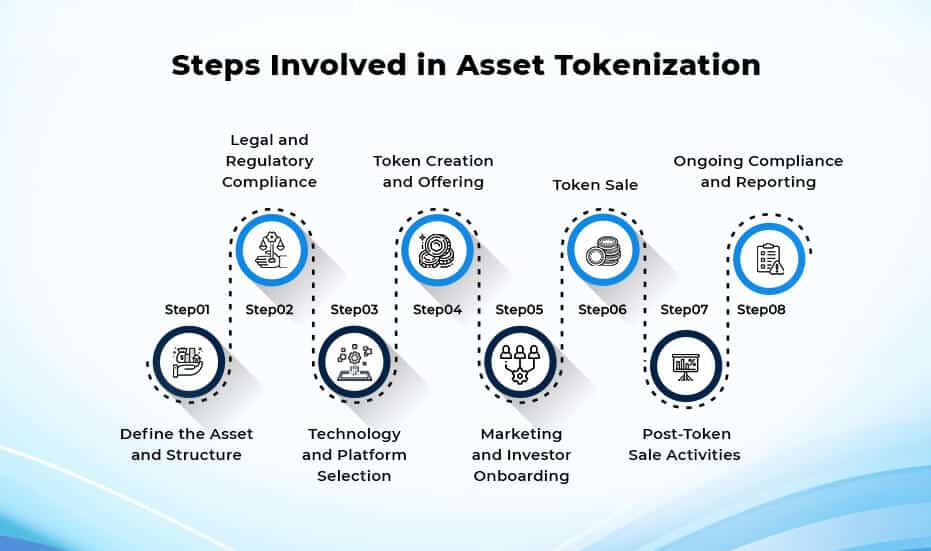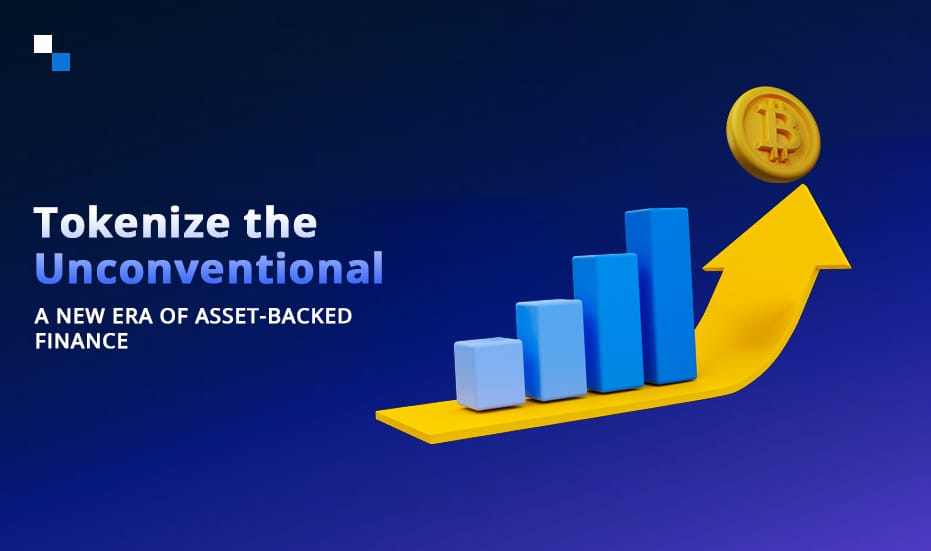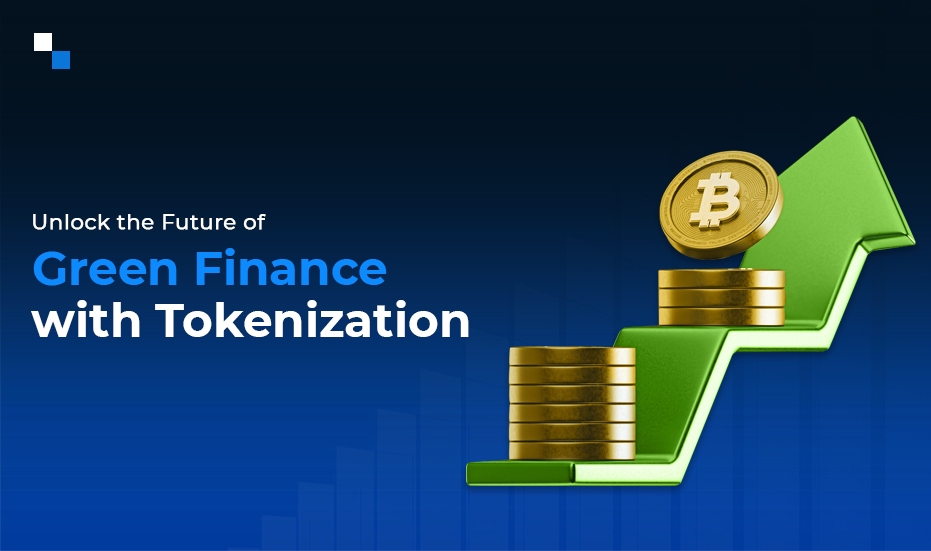
How to Develop a Poloniex-like Bitcoin Exchange Software
August 11, 2023
Maximizing Profits With Crypto Arbitrage Bot in 2024
August 14, 2023In recent years, the concept of asset tokenization has gained significant traction, transforming the way we perceive ownership, trade, and investment. Tokenization involves converting physical assets into digital tokens that are securely recorded on a blockchain. This groundbreaking process has the potential to reshape industries and create what’s often referred to as the “Economy of Everything.”
In this blog, we’ll delve into the intricacies of asset tokenization, its benefits, steps of tokenization, and the transformative impact it can have on various sectors.
The Essence of Asset Tokenization
Asset Tokenization Platform Development marks a paradigm shift in how we value and interact with assets. From real estate properties and precious metals to artwork and commodities, virtually any tangible asset can be tokenized. Each token represents ownership rights to a fraction of the underlying asset, enabling fractional ownership. These tokens are tradable, transparent, and traceable on blockchain platforms, introducing efficiency and liquidity to traditionally illiquid markets.
Steps Involved in Asset Tokenization

Tokenizing physical assets, especially through creating digital shares or tokens via Initial Coin Offerings (ICOs) or Security Token Offerings (STOs), is a sophisticated process that combines legal, financial, and technological aspects. Here’s a detailed step-by-step guide:
Step 1: Define the Asset and Structure
- Asset Selection: Choose the physical asset you want to tokenize. It could be real estate, art, commodities, or any valuable item.
- Ownership Structure: Determine the legal structure for the asset ownership. This could be a special purpose vehicle (SPV) or a similar entity that holds the asset and issues tokens.
Step 2: Legal and Regulatory Compliance
- Legal Consultation: Seek legal advice to understand the regulatory requirements in your jurisdiction. This includes securities laws, ownership rights, and compliance with Anti-Money Laundering (AML) and Know Your Customer (KYC) regulations.
- Asset Documentation: Gather all necessary documentation related to the asset, including ownership records, appraisals, and legal descriptions.
Step 3: Technology and Platform Selection
- Blockchain Platform: Choose a suitable blockchain platform for your tokenization project. Ethereum and other platforms with smart contract capabilities are commonly used for this purpose.
- Smart Contract Development: Develop a smart contract that outlines the rules for the token creation, ownership, transfer, and other functionalities. This smart contract will act as the backbone of your tokenized asset.
Step 4: Token Creation and Offering
- Token Specification: Define the parameters of your tokens, including the total supply, decimals, and any additional features such as dividend distribution.
- Token Development: Create the tokens based on the smart contract specifications. These tokens will represent ownership shares in the physical asset.
- Whitepaper Creation: Draft a detailed whitepaper that outlines the project, the tokenomics, the asset’s value proposition, and the rights associated with token ownership.
- Security and Audit: Conduct thorough security audits of your smart contract to identify and rectify vulnerabilities that could compromise the security of your tokenized asset.
Step 5: Marketing and Investor Onboarding
- Investor Outreach: Develop a marketing strategy to attract potential investors for asset tokenization. Explain the benefits of investing in tokenized assets, such as increased liquidity and fractional ownership.
- KYC and AML: Implement a KYC and AML process to verify the identity of investors and ensure compliance with regulations.
- Investor Onboarding: Develop a user-friendly platform or portal where investors can register, complete KYC verification, and participate in the token sale.
Step 6: Token Sale
- Offering Type: Determine whether your token sale will be structured as an ICO (utility tokens) or an STO (security tokens). STOs require more regulatory compliance.
- Legal Documentation: Prepare the necessary legal documentation for the token sale, including the offering memorandum or prospectus for STOs.
- Token Sale Execution: Launch the token sale on the designated platform. This involves opening the sale to investors, accepting payments in cryptocurrencies or fiat, and distributing the corresponding tokens.
Step 7: Post-Token Sale Activities
- Secondary Market: List the tokens on secondary markets or exchanges to allow token holders to trade their ownership shares.
- Asset Management: Manage the physical asset transparently, providing regular updates to token holders about its performance, maintenance, and any relevant changes.
- Liquidity and Redemption: Establish mechanisms for investors to sell their tokens back or redeem them for the underlying asset.
Step 8: Ongoing Compliance and Reporting
- Regulatory Compliance: Continuously monitor regulatory changes in your jurisdiction and adapt your operations to remain compliant.
- Auditing: Regularly audit the tokenized asset’s ownership and financial health to maintain transparency and trust with token holders.
Engaging experts in asset tokenization services, blockchain development, legal compliance, and finance is crucial to ensure a successful tokenization of physical assets projects.
Want to Experience the Transformative Power of Asset Tokenization?
Schedule Free DemoBenefits of Asset Tokenization
-
Increased Accessibility
Tokenization enables fractional ownership, making high-value assets accessible to a wider range of investors. It eliminates the barriers that often prevent retail investors from entering markets like real estate, fine art, and more.
-
Liquidity Enhancement
Illiquid assets, such as real estate, can become more liquid as token holders can easily trade their ownership stakes on secondary markets. This democratizes investment opportunities and accelerates transactions.
-
Transparency and Traceability
Every tokenized asset transaction is recorded on a blockchain, providing an immutable and transparent record of ownership transfers. This reduces fraud, enhances trust, and simplifies auditing processes.
-
Global Market Access
Tokenization eliminates geographical limitations, allowing investors from around the world to participate in various markets. This leads to increased market efficiency and cross-border investment opportunities.
-
Fractional Investment
Investors can diversify their portfolios by holding fractions of different asset classes, spreading risk and optimizing returns.
-
Efficient Settlement
Tokenization automates settlement processes, reducing the time and administrative burden associated with traditional asset transfer methods.
Get Obligation Free Quote
[widget id=”custom_html-3″]
The Transformative Impact Across Industries
-
Real Estate
Tokenizing real estate properties allows for fractional ownership and easier entry into the market. Investors can own a piece of premium properties without the need for significant capital.
-
Art and Collectibles
Asset tokenization revolutionizes the art market by enabling investors to own fractions of valuable artworks and collectibles, democratizing the art investment landscape.
-
Commodities
Asset tokenization democratizes commodity trading, enabling individuals to invest in precious metals, agricultural products, and more.
-
Finance and Investment
Traditional financial instruments like stocks, bonds, and ETFs can be tokenized, making trading and ownership more accessible and efficient.
-
Supply Chain Management
Tokenizing components along a supply chain enhances transparency, traceability, and reduces counterfeiting risks.
-
Retail and Consumer Goods
Tokenizing consumer goods can establish ownership rights and enable secondary markets for pre-owned items.
-
Infrastructure and Real-world Indices
Tokenizing public infrastructure projects and creating indices of tokenized assets offers new investment avenues for individuals and institutions.
Conclusion
The concept of tokenizing physical assets is rewriting the rules of ownership, investment, and market accessibility. As blockchain technology matures and regulatory frameworks evolve, the Economy of Everything becomes increasingly feasible. Tokenization unlocks unprecedented liquidity, transparency, and inclusivity across various industries, shaping a future where traditional boundaries are blurred, and economic opportunities know no bounds. Embracing asset tokenization is not just a technological advancement, but a transformative leap toward a more efficient and inclusive global economy. Book a consultation today with Antier to embark on the journey of Asset Tokenization.



